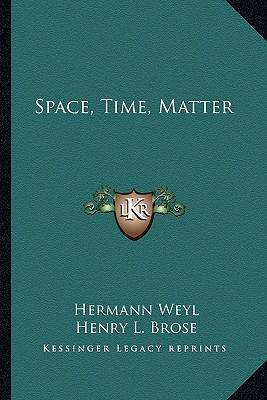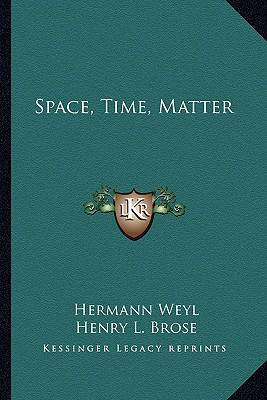
- Afhalen na 1 uur in een winkel met voorraad
- Gratis thuislevering in België vanaf € 30
- Ruim aanbod met 7 miljoen producten
- Afhalen na 1 uur in een winkel met voorraad
- Gratis thuislevering in België vanaf € 30
- Ruim aanbod met 7 miljoen producten
Zoeken
Omschrijving
""Space, Time, Matter"" is a seminal work in the field of theoretical physics written by the German mathematician and physicist Hermann Weyl. Originally published in 1918, the book explores the fundamental concepts of space, time, and matter and their interrelationships. Weyl's approach is deeply philosophical, and he draws on a range of disciplines, including mathematics, physics, and philosophy, to develop his ideas.The book is divided into three main sections. The first section focuses on the nature of space and time, and Weyl argues that they are not absolute, fixed entities but rather are relative and dependent on the observer. He introduces the concept of a ""world line"" to describe the path of an object through space-time and discusses the implications of this idea for our understanding of the universe.The second section of the book is devoted to the concept of matter. Weyl argues that matter is not a fixed, immutable substance but rather is constantly changing and evolving. He introduces the concept of ""field"" to describe the dynamic interactions between matter and space-time and discusses the role of energy in these interactions.The final section of the book brings together the ideas presented in the first two sections and explores their implications for our understanding of the universe as a whole. Weyl discusses the concept of ""space-time curvature"" and its role in the behavior of matter and energy. He also discusses the idea of a ""cosmic time"" that transcends individual observers and provides a broader perspective on the universe.Overall, ""Space, Time, Matter"" is a groundbreaking work that has had a profound influence on the development of modern physics and cosmology. It remains a classic of theoretical physics and is essential reading for anyone interested in the fundamental nature of the universe.This scarce antiquarian book is a facsimile reprint of the old original and may contain some imperfections such as library marks and notations. Because we believe this work is culturally important, we have made it available as part of our commitment for protecting, preserving, and promoting the world's literature in affordable, high quality, modern editions, that are true to their original work.
Specificaties
Betrokkenen
- Auteur(s):
- Vertaler(s):
- Uitgeverij:
Inhoud
- Aantal bladzijden:
- 348
- Taal:
- Engels
Eigenschappen
- Productcode (EAN):
- 9781163814604
- Verschijningsdatum:
- 10/09/2010
- Uitvoering:
- Paperback
- Formaat:
- Trade paperback (VS)
- Afmetingen:
- 152 mm x 229 mm
- Gewicht:
- 467 g

Alleen bij Standaard Boekhandel
+ 92 punten op je klantenkaart van Standaard Boekhandel
Beoordelingen
We publiceren alleen reviews die voldoen aan de voorwaarden voor reviews. Bekijk onze voorwaarden voor reviews.











